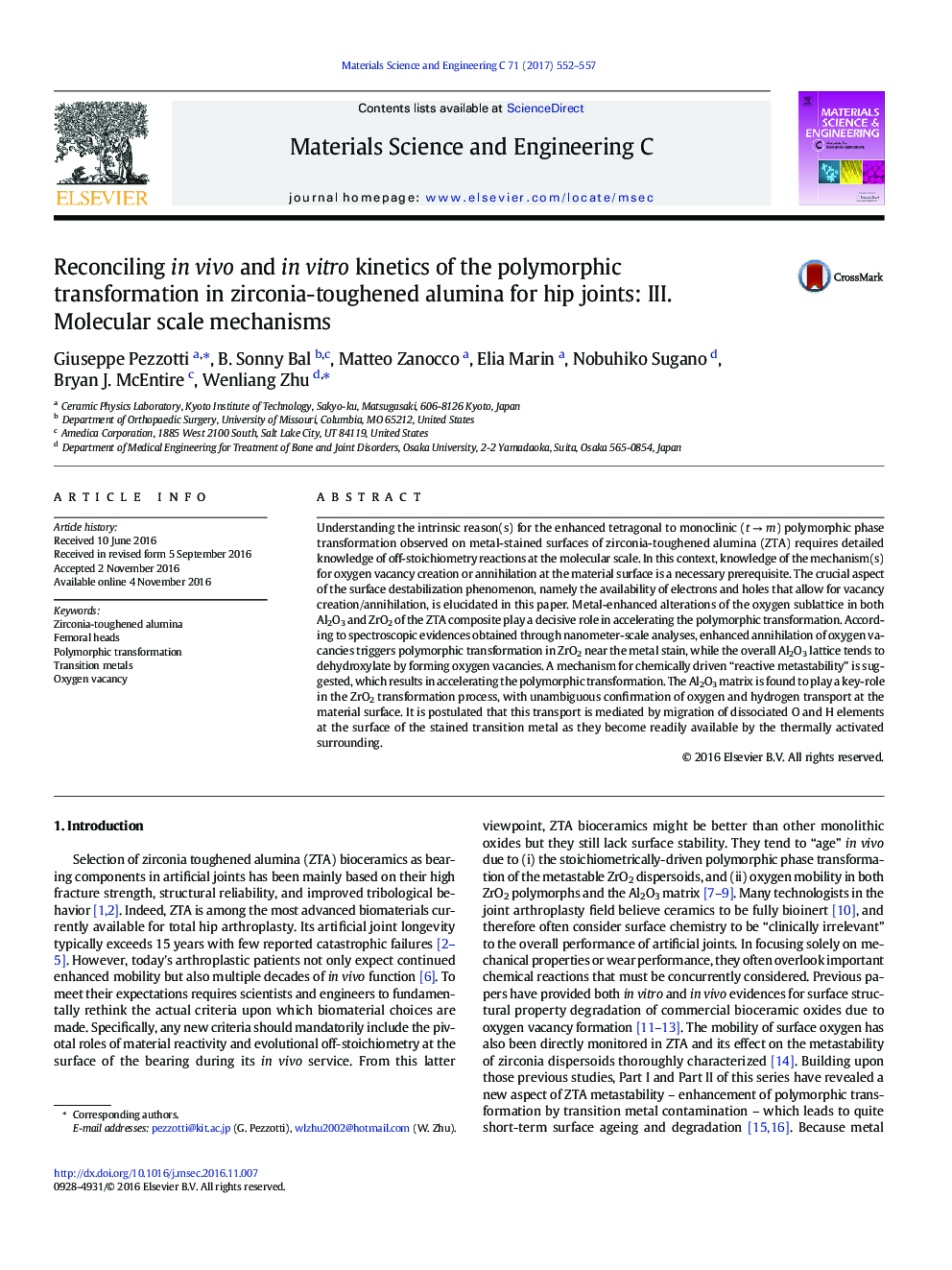| کد مقاله | کد نشریه | سال انتشار | مقاله انگلیسی | نسخه تمام متن |
|---|---|---|---|---|
| 5434661 | 1509150 | 2017 | 6 صفحه PDF | دانلود رایگان |

- The presence of transition metal stains causes oxygen vacancy annihilation and destabilizes ZTA.
- New algorithms were introduced for assessing surface off-stoichiometry in ZTA.
- Details of surface chemistry are mandatory in assessing ceramic bearing biomaterials.
Understanding the intrinsic reason(s) for the enhanced tetragonal to monoclinic (t â m) polymorphic phase transformation observed on metal-stained surfaces of zirconia-toughened alumina (ZTA) requires detailed knowledge of off-stoichiometry reactions at the molecular scale. In this context, knowledge of the mechanism(s) for oxygen vacancy creation or annihilation at the material surface is a necessary prerequisite. The crucial aspect of the surface destabilization phenomenon, namely the availability of electrons and holes that allow for vacancy creation/annihilation, is elucidated in this paper. Metal-enhanced alterations of the oxygen sublattice in both Al2O3 and ZrO2 of the ZTA composite play a decisive role in accelerating the polymorphic transformation. According to spectroscopic evidences obtained through nanometer-scale analyses, enhanced annihilation of oxygen vacancies triggers polymorphic transformation in ZrO2 near the metal stain, while the overall Al2O3 lattice tends to dehydroxylate by forming oxygen vacancies. A mechanism for chemically driven “reactive metastability” is suggested, which results in accelerating the polymorphic transformation. The Al2O3 matrix is found to play a key-role in the ZrO2 transformation process, with unambiguous confirmation of oxygen and hydrogen transport at the material surface. It is postulated that this transport is mediated by migration of dissociated O and H elements at the surface of the stained transition metal as they become readily available by the thermally activated surrounding.
Metal-enhanced alterations of the oxygen sublattice in both Al2O3 and ZrO2 of the ZTA composite play a decisive role in the polymorphic transformation. According to spectroscopic evidence obtained through nanometer-scale analyses, enhanced annihilation of oxygen vacancies in Al2O3 and ZrO2 occurs near the metal stain, while the hydrothermal environment pushes the overall Al2O3 lattice to dehydroxylate and form new oxygen vacancies. A mechanism for this chemically driven “reactive metastability” is suggested which results in accelerating the polymorphic transformation.96
Journal: Materials Science and Engineering: C - Volume 71, 1 February 2017, Pages 552-557